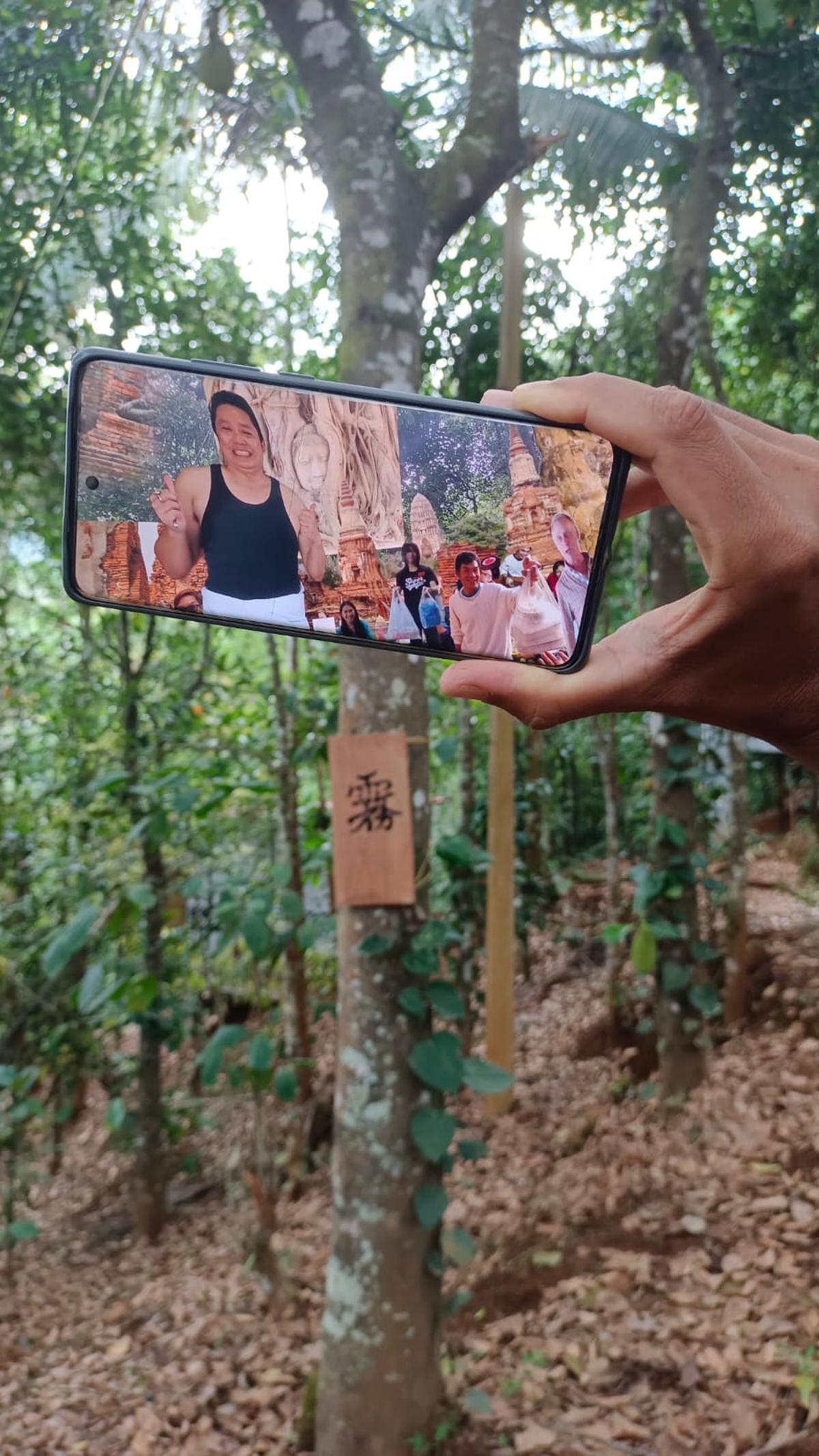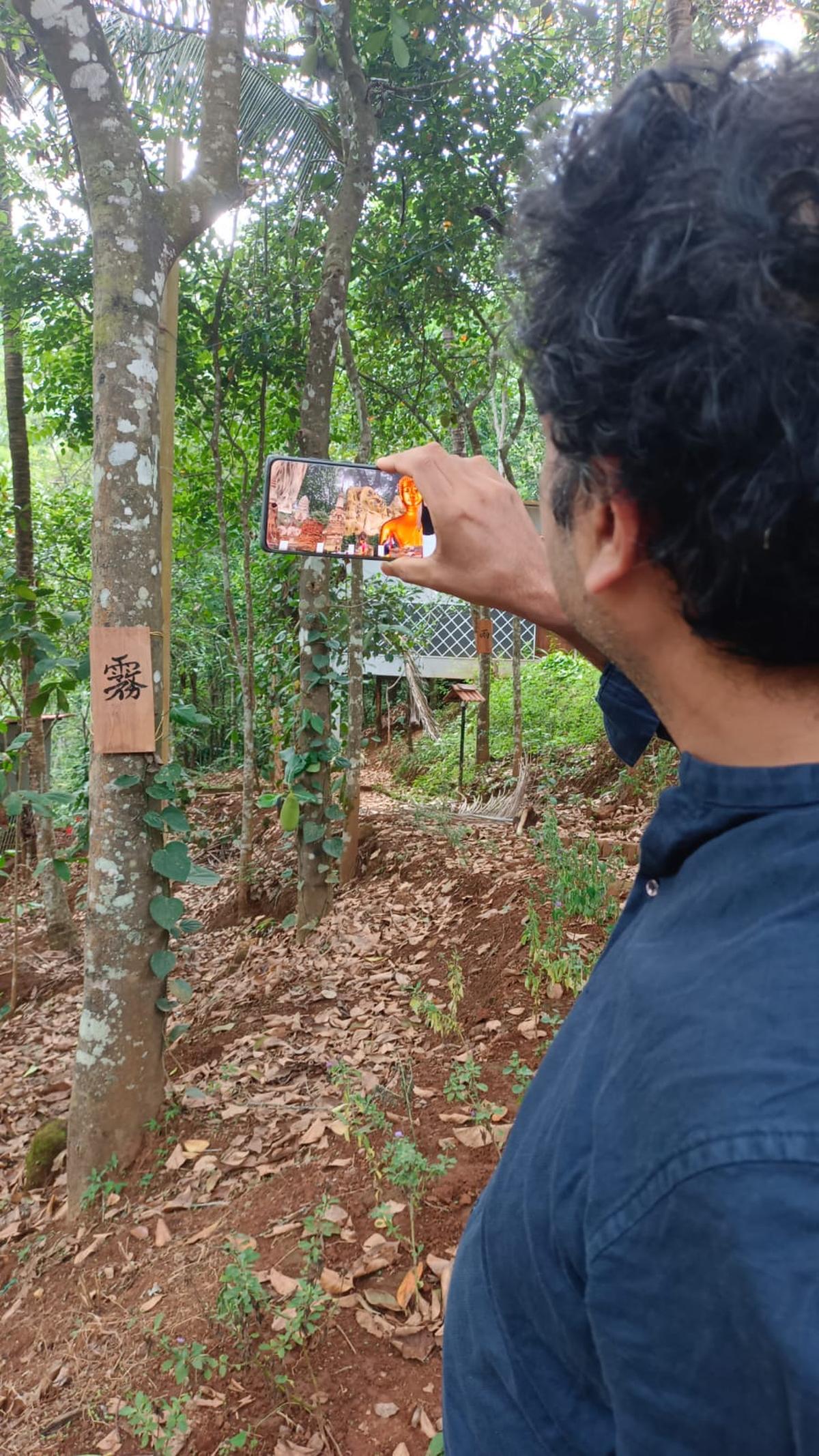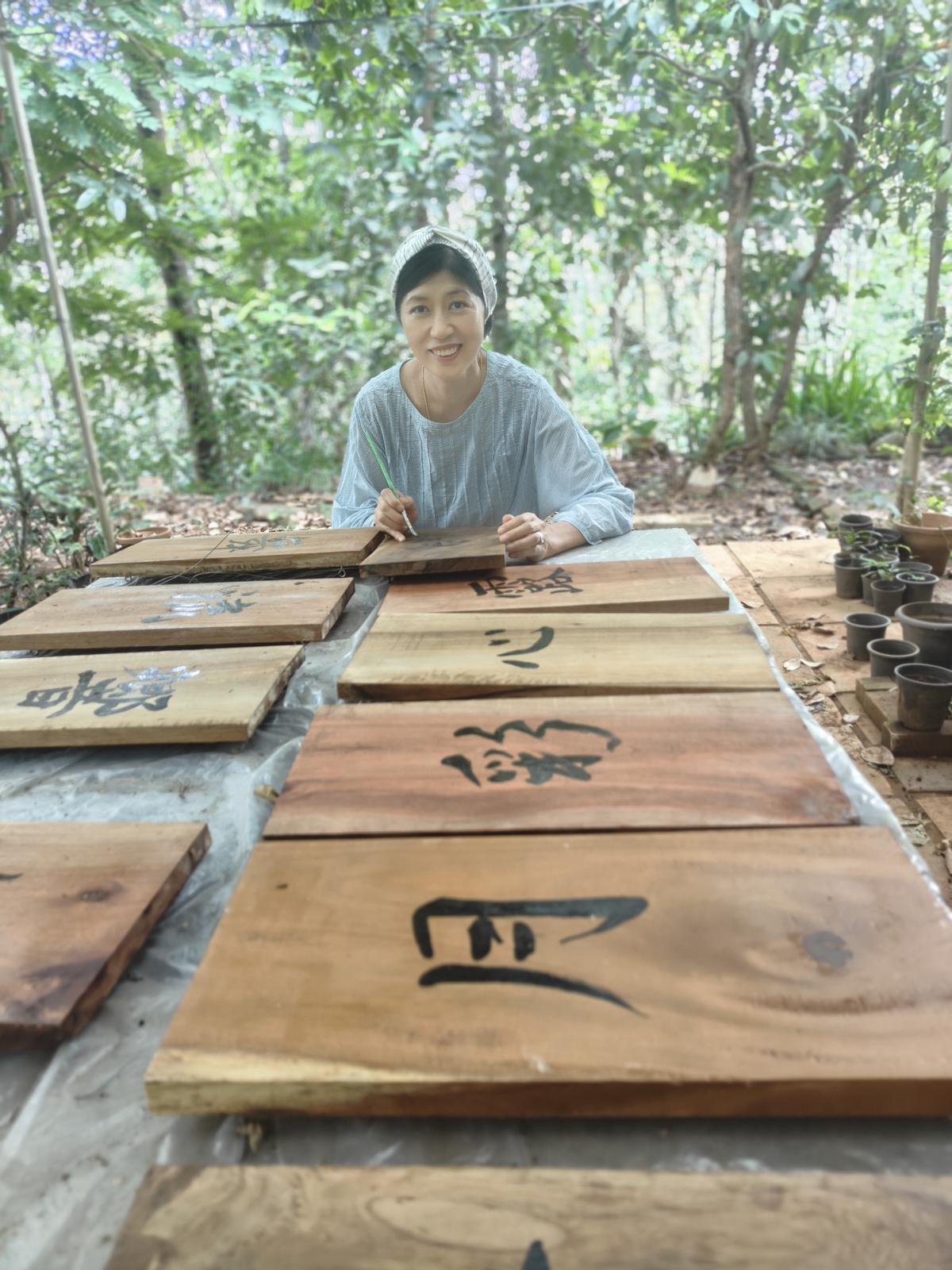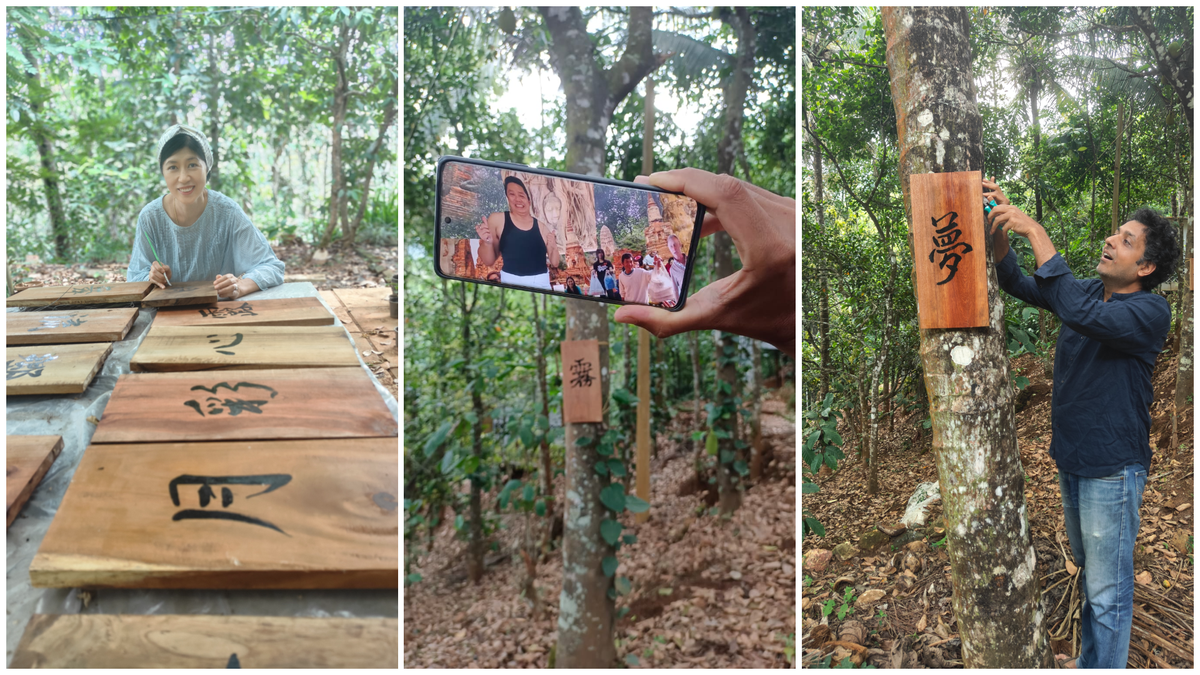A few years ago, Sunil Kaushik, an Indian innovation consultant, along with Japanese artist-writer Yuka Yokozawa, undertook an ambitious 500-day cycling journey from Thailand to Portugal. As they travelled across 17 countries and 38 borders, the duo faced numerous challenges, including getting lost in an Iranian desert, experiencing the 2016 Turkish coup attempt, and encountering a terrorist incident in Maçka, Turkey. However, the duo kept at it, and Yuka documented their travels in a memoir, Golden Hearts On The Road.

Sunil Kaushik
| Photo Credit:
Special Arrangement
“After completing our cross-continental journey, we settled in the forested region of Wayanad, Kerala. We found a small plot of land with a waterfall and over 300 trees, and we were seeking a simpler, sustainable lifestyle close to Nature,” says Sunil. This site is now home to the Augmented Reality (AR)-powered The Gratitude Forest. Sunil explains that they were inspired by the generosity and kindness they had encountered from over 200 families during their cycling journey. “We then set out to create an art installation in their forest as a tribute to these ‘golden hearts’. The initial vision was to set up a Golden Hearts Museum that involved physically displaying portraits and stories of our hosts on trees throughout their property.”

A snapshot of the AR-powered forest
| Photo Credit:
Special Arrangement
However, the unique environment of Wayanad — that is prone to eight months of heavy rainfall and regular visits from local wildlife, especially monkeys — proved challenging. “When we first began setting up physical displays that included hanging laminated photographs, small frames, or written stories from the trees, monkeys saw these as curious new toys. The installations were frequently damaged or destroyed, and we were reluctant to use paper or plastic. These practical and environmental obstacles led us to reconsider our approach and look for a sustainable alternative,” says Sunil, who decided to turn to AI, and started brainstorming with generative AI tools in 2023. “As we discussed our limitations with ChatGPT and Copilot, we realised that a digital, non-invasive solution could let us share all the stories without leaving a trace in the forest. AR seemed like the perfect fit: the technology allowed us to create a museum where visitors could use their phones to ‘see’ virtual pages, illustrations, and motifs hanging from the trees, while leaving the real landscape completely untouched.”

Yuka Yokozawa
| Photo Credit:
Special Arrangement
The financials this project required pushed the duo to learn all about AR using “open-source resources, free online tutorials, and lots of trial and error”. Sunil says this process was daunting at first as neither of them “had written a line of code before this project. But in the end, it allowed us to keep the spirit of the museum personal, flexible, and true to our original vision,” says Sunil, adding that The Gratitude Forest was built at a zero cost. “The whole process took close to six months, and went through multiple changes. In the end, we had generated approximately 10,000 lines of code,” says Sunil who focussed on the project’s technical development, while Yuka was on the artistic and cultural side. “She selected the Japanese kanji motifs (drawing from Shinto traditions that honour Nature) and matched each kanji character to specific trees, considering the environment and the meaning. She also ensured that the calligraphy and motif placement contributed to a harmonious and reflective forest experience,” adds Sunil.
Since The Gratitude Forest is a private installation, Sunil says it is invite-only at present. “We regularly receive requests on social media from people interested in experiencing the project, and we’re always happy to arrange a personal tour for those who reach out. Over the last year, we’ve welcomed several dozen guests including local residents, travellers, artists, and technologists who have experienced the installation firsthand,” he adds.

A view of The Gratitude Forest
| Photo Credit:
Special Arrangement
While the remoteness and wildness are part of what make the experience unique, Sunil says they are actively looking at ways to make the installation more accessible and user-friendly. “Our goal is to install clones of the art, each customised for the place and story it comes from. We’re currently in discussion with contemporary museums, open spaces, community centres, and art galleries across several countries where our stories originated.” This list includes Taiwan, Thailand, Vietnam, China, Iran, Turkey, Armenia, Georgia, Greece, Italy, Spain, and Portugal. “We’re hopeful that by the end of this year, visitors in several of these countries will be able to experience the installations in their own local contexts,” says Sunil, who says the project is still in its early stages of public rollout in India.

Yuka Yokozawa at The Gratitude Forest
| Photo Credit:
Special Arrangement
Going forward, the couple hopes to expand The Gratitude Forest beyond their own story. “We hope to invite authors, artists, and eco-conscious landowners to create their own storytelling spaces, rooted in their unique cultures and experiences. Ultimately, we imagine these immersive installations appearing in public parks and open spaces, making stories of generosity and shared history accessible to everyone,” concludes Sunil.

